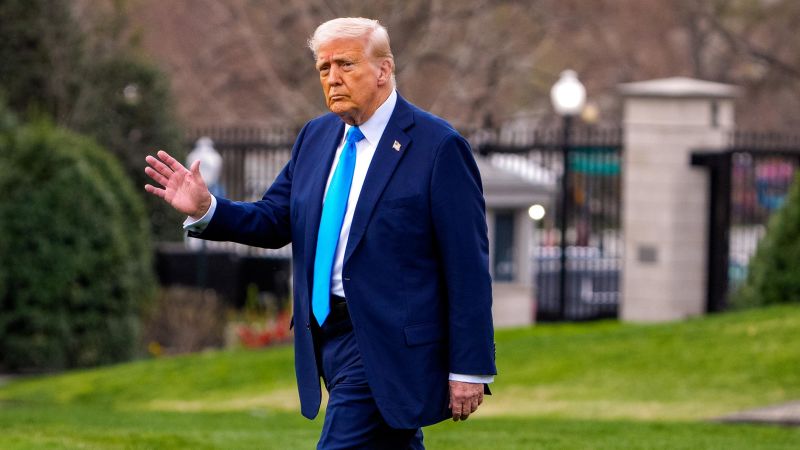CNN
—
For weeks, President Donald Trump has promoted April 2 as “Liberation Day” in America, when a number of massive tariffs will be announced to fulfill the administration’s ambitious economic agenda. The plan has largely remained a mystery, however, as Trump and his administration have floated a number of constantly changing and conflicting proposals. Now we know a little more about what to expect.
A very little bit: We now know how it will be announced. Maybe.
Trump will unveil his tariff plan on Wednesday in his first Rose Garden press conference of his second term, White House press secretary Karoline Leavitt told reporters Monday. The cabinet will be present for the event, she said.
“Wednesday, it will be Liberation Day in America, as President Trump has so proudly dubbed it,” Leavitt said. “The President will be announcing a tariff plan that will roll back the unfair trade practices that have been ripping off our country for decades. He’s doing this in the best interest of the American worker.”
But Leavitt did not provide any details about what Trump would announce. She suggested, as Trump has said repeatedly, that the president could announce reciprocal tariffs Wednesday, matching other countries’ tariffs dollar for dollar.
Leavitt noted astronomically high tariffs some countries charge for American products, such as a 250% tariff Canada has on the books for American dairy products. Although those numbers are often high on paper, they’re tariffs that are probably never charged because nations with ultra-high tariffs import very little from the United States.
Still, Leavitt said the high tariffs are unfair for Americans, and the United States should charge the same, in kind.
“This makes it virtually impossible for American products to be imported into these markets, and it has put a lot of Americans out of business and out of work over the past several decades,” Leavitt said. “So it’s time for reciprocity, and it’s time for a president to take historic change, to do what’s right for the American people, and that’s going to take place on Wednesday.”
Leavitt said it is ultimately up to Trump to decide what tariffs to impose. He and his advisers have contradicted themselves over the past days and weeks as they have tried to set expectations about what would be announced on April 2. Everything from reciprocal tariffs on all countries, the enactment of delayed 25% tariffs on Mexico and Canada, and tariffs on lumber, copper, pharmaceuticals and microchips have been proposed. Trump has already announced auto tariffs that are set to go into effect on April 3.
But at various times officials and the president have thrown cold water on their own tariff plans. They have suggested, for example, tariffs on various industries and products could be announced as late as June. Last week, Bloomberg and the Wall Street Journal reported reciprocal tariffs on just a handful of countries would go into effect. And Trump last week said the tariffs he plans to announce Wednesday would be “far more generous” than what other countries charge the United States.
But on Air Force One Sunday, Trump said his reciprocal tariffs would be put in place on all countries as a starting point and then he’d negotiate them down if necessary.
Leavitt on Monday said Trump continues to discuss plans with his team.
“He has a brilliant team of trade advisers,” Leavitt said Monday, listing Treasury Secretary Scott Bessent, Commerce Secretary Howard Lutnick, US Trade Representative Jamieson Greer, trade adviser Peter Navarro, senior aide Stephen Miller and Vice President JD Vance.
“All of these individuals have presented plans to the president on how to get this done, and it is the president’s decision to make,” Leavitt added.
Navarro on Sunday said he expected the United States could raise $600 billion a year from tariff revenue, which would amount to the largest tax increase since World War II. However, that math is dubious, because tariffs are designed to shift Americans’ purchasing behavior to buy products that are made in the United States — and avoid paying tariffs. Also, as economists expect tariffs to hike costs for a large number of products, some inflation-weary Americans may curtail their discretionary spending and avoid paying tariffs on goods they’re no longer buying.
That could ultimately hurt the economy. Tariff threats have sent consumer sentiment plunging in recent months, and Wall Street analysts at Goldman Sachs and JPMorgan have said the odds of a US recession are on the rise.

